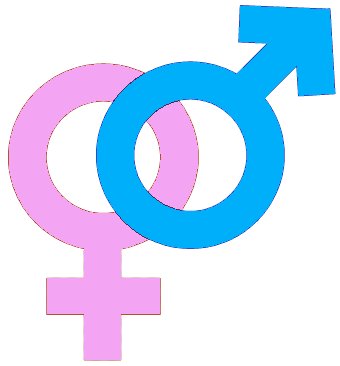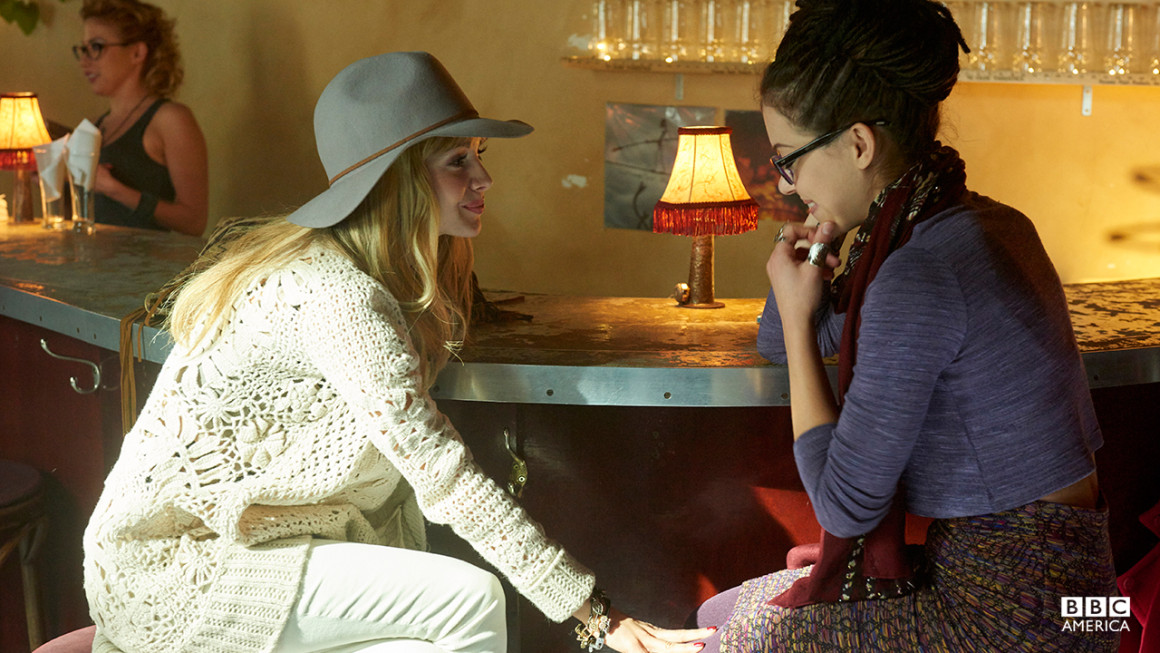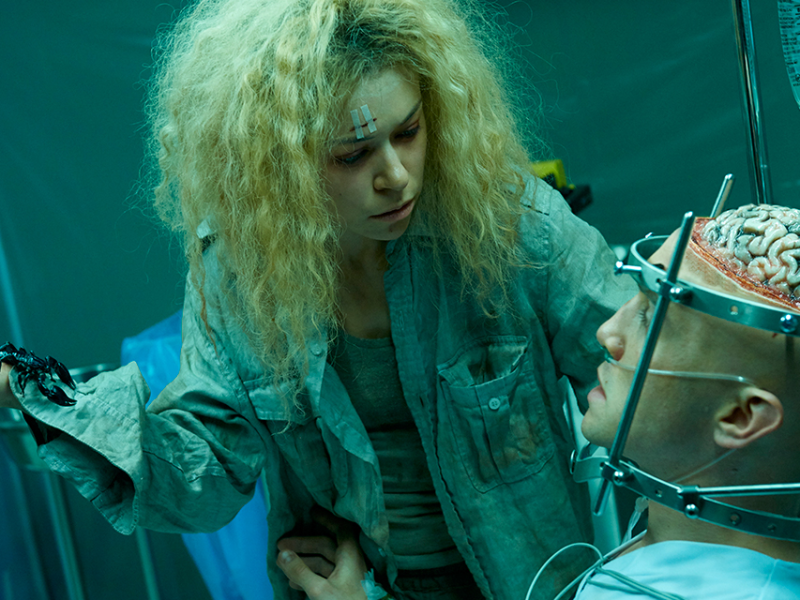We’ve considered an awful lot about what makes Sarah Manning (Tatiana Maslany), Alison Hendrix, (Tatiana Maslany), and the swelling multitude of clones in the Orphan Black universe so dang diverse. Essentially, each week we’ve asked the science questions on the minds of all Orphan Black fans: “Why aren’t these clones identical?” “What gives? Aren’t they supposed to be clones?” and “Who do these clones think they are, what with being distinct individuals and all?” Put another way, we’ve explored the science behind personal identity; clones are a perfect experimental system for determining what makes you you and me me. Along the way, we’ve discovered that formative experiences, gestation conditions, and epigenetics have probably shaped the obvious array of Project Leda personas, hair types, and skin tones (though I’m pretty sure Helena’s persistent captivity explains her ghostly complexion). But this week is a little different; we’re going to approach this topic backwards, by starting with a distinguishing personal characteristic instead of the causal biological mechanism.

While most of the clones we’ve encountered so far seem to be heterosexual, we’ve met two who definitely belong to the LGBT community. Anyone who’s even seen one episode of Orphan Black is surely familiar with Cosima Niehaus (Tatiana Maslany). She’s gay, and her romantic relationship (with Delphine Cormier (Evelyne Brochu), current Dyad Institute head and onetime Dyad clone monitor), has been a key plot point. We’ve also met Tony Sawicki (again, played by Tatiana Maslany) in episode 8 of season two (Variable and Full of Perturbation). The transgender Tony (born Antoinette) carries himself like a proudly crass American redneck. On the advice of Sarah, Tony takes his spotty legal history elsewhere, hopefully beyond the reach of Dyad, Topside, and possibly the Canadian military intelligence apparatus.

What’s the difference between sex, gender, and orientation?
But I’ve digressed, and I must digress even further. Before delving into the questions we’re exploring today, I’m going to point out something that might not be obvious to everyone. Though Cosima and Tony are definitely LGBT, this is a somewhat artificial grouping. Let me identify a couple of overlapping terms to illustrate this point: sex, gender identity, and sexual orientation. For most people, sex is the easiest term to define. The chromosomes and organs you are born with typically define your biological sex. If you have two X chromosomes or an X and a Y chromosome, you are generally female or male, respectively. However, not everyone identifies with their biological sex, and this is where gender identity comes in.

A majority of folks identify with the biological sex they were born, and we refer to these people as cisgender. However, when biological sex does not match with a person’s own identity, we instead use the term transgender. Thanks to technology, many transgender people (like Bruce Jenner, famously) are now able to takes steps to augment their biological sex to more closely conform to the gender with which they identify. As suggested by Tony’s goatee, he has probably opted for hormone therapy to feel more harmony between his identity and physical body.
Generally speaking, sexual orientation refers to the gender and/or sex that a given person typically finds attractive. While heterosexual, bisexual, and homosexual are general categories, most people seem to understand that sexual orientation can exist between these classic groupings or defy categorization altogether. Heck, some people are physically attracted to no one (asexual) while others are attracted to all combinations of sex and gender identity (pansexual).
And as I’m sure you realize, use of these labels can be somewhat complicated because humans are complicated. For example, Tony, who is clearly transgender, put the moves on Felix Dawkins (Jordan Gavaris). Does this make Tony transgender and gay or perhaps bisexual? By many definitions, yes, but again this is complicated. Ultimately the LGBT or queer community is comprised of a great diversity of people that have banded together to fight for their rights and acceptance by society, and as evidenced by the soaring gay marriage approval rates, it is working! These positive changes are perhaps best exemplified by revisions to the most recent Diagnostic and Statistical Manual of Mental Disorders, DMS-5, which no longer lists gender identity disorder (in favor of the less judgmental sounding gender dysphoria). This technical reference is the clearest barometer demonstrating the beliefs of the medical, scientific, and psychological establishments that there is a real basis for LGBT diversity and it does not represent a dysfunction or a psychological flaw.
Today, we ask two questions, both of which are ridiculously complicated: What factors predispose a person to being gay? What factors predispose a person to identifying with a gender that is discordant with his or her biological sex? And once again, we still want to know if the variation we see in the clones is realistic. Please note, that these are almost certainly two separate, distinct questions. Moreover, most research focuses on what makes gay men gay rather than what makes lesbian women lesbian; similarly, these are probably two separate questions. (This piece focuses on the factors that may make some woman feel attracted to women and some biological females personally identify with a male gender. Accordingly, this is not a full picture of the incredible complexity of the biology of sexuality and gender.)
Why not ask what makes some folks straight?
In a heteronormative society, it is super easy to ask, “hey, why is Cosima gay?” But it is also lazy to stop there. Why not also ask, “hey, why are all these clones straight?” Our focus will be on the former question only because it is the question biologists and geneticists typically ask. The standard reductionist hypothesis-testing approach of science requires a starting pointing, called a null hypothesis. Because it seems that a majority of our species is comprised of heterosexual cisgender folks, biologists interested in sexual orientation and gender ask what differed developmentally or genetically for queer folks.
However¸ again, this does not make being queer a disorder. A lot of science writing on this subject comes across with slightly homophobic sounding language. It’s probably (hopefully) unintentional. Remember, for most of the studies I present below, the words homosexual and transgender could be replaced with the words heterosexual and cisgender without changing the meaning.
What might determine the sexual orientation of a clone?
As noted in the previous nature vs. nurture blog post, the gold standard for determining the causes of a particular human trait (or phenotype) is a series of twin studies. The trait of sexual orientation is no exception. The key to these studies is large panels of randomly sampled twins, both fraternal (or dizygotic) and identical (or monozygotic) twins. If identical twins (which are genetically identical) resemble each other more often than fraternal twins (which are just siblings), voila, genes contribute to the phenotype in question.

So far, only two randomly sampled twin studies have been used to determine the basis of sexual orientation in women (note, previous studies made very serious methodological errors like lumping men and women together or only including twins that responded to magazine ads, which introduces bias). The first study used Swedish Twin Registry data from over five thousand female twins; in 2010, Långström and colleagues found that approximately 18% of female sexual orientation (as determined by having had any same sex partners) is determined by genetics. However, this value of 18% was not significantly different from zero—that is, their analysis was not statistically powerful enough to find this relatively weak effect. Another flaw of this study is that have one same sex partner is not the same as being gay (nor is being bisexual the same as being gay, for that matter). Ultimately, Långström and colleagues concluded that the undefined experiences that were unique to each twin determined the sexuality of women (and when I say undefined, I mean that. The authors of the study didn’t even address what this means).
However, the second study, performed by Burri and others in 2011, used data from the TwinsUK registry as well as a more thorough questionnaire on sexual orientation, and found a more robust result. Specifically, they found that genetics explained 25% of sexual orientation, but more importantly, this estimate was actually statistically higher than zero. That is, the pattern was strong enough to suggest genetics actually shapes female sexuality. Additionally, they found a small (11%) genetic effect on gender identity in this sample as well; that is, genes seem to have a small but likely effect on the likelihood of someone being cisgender versus transgender.
What might determine the gender identity of a clone?

Unfortunately, the Burri et al. study is about the best gender conformity data from biological female twins that we have. Most of the data we do have on the matter is pieced together from individual case studies on pairs of twins that contain at least one transgender individual. These are incredibly imperfect data sets because the individuals are not randomly sampled; furthermore, the total number of cases is so small (numbering in the low dozens) that even a random sample could not theoretically provide a statistically significant result. However, in the most recent aggregation of these case studies (available in a fairly understandable scholarly article transcribed here), 23% of all biologically female identical twin pairs were concordant, while 0% of fraternal twins with were concordant. This finding strongly suggests that female to male transgender status is contributed to by genes, which is supported in at least one finding.
Despite the weak support of twin studies, another type of study, known as an association study, has identified a gene that may likely contribute to gender status in biological females, but not biological males. A specific version of the cytochrome P450 17 (CYP17) gene appeared more often in female to male transgender individuals than in any other group of individuals, which included heterosexual, homosexual, cisgender, and male to female transgender folks. Interestingly, CYP17 is involved in the metabolism of sex hormones. More interestingly, the CYP17 result has actually been observed in at least two studies. This replicated result suggests that if genes underlie gender status, it is likely to be genes like CYP17 that influence sex hormone levels. Similarly, it also supports many of the theories that suggest exposure to sex hormones throughout development, including during gestation, tend to shape gender identification.
Why don’t we have any clear answers?
In 2015, global scientific research output is capped by public funding levels, which are only now beginning to recover from pre-Great Recession cuts. Besides, most public funding goes to research with clear benefits benefits to humanity. Determining what factors predispose us to being gay improves the human condition not one iota. Being gay is not a disease, it’s not a condition that needs to be resolved, and more people will agree with those statements over time, hopefully. Finding a so-called gay gene would be about as useful as finding a gene for handedness. Who cares? DSM-5 and the medical professional community certainly don’t.
Why are the Project Leda clones not of a uniform sexual orientation or gender?

As argued in the nature versus nurture article, we know that Sarah Manning and her sisters (and brother, Tony) basically share a genome. Accordingly, we’ve been left to conclude that all the variation we Orphan Black viewers observe in the clones must be due to everything that happened to them following their production in the labs of Dyad, Topside, or whoever the heck was clandestinely guiding Project Leda in the early 1980’s. For example, conditions in the womb, such as hormones, could have triggered developmental or epigenetic cascades that led most clones to feel female, while Tony Sawicki instead felt at odds with his two X chromosomes. Perhaps an epigenetic mark on a gene like CYP17 turned gene expression up, down, on, or off in such a way that the balance of sex hormones changed in Antoinette Sawicki’s bloodstream until she felt much more like he—that is, Tony. However, the basis for homosexuality is a little more unclear. Cosima is likely gay for a multitude of reasons—as many reasons as Sarah is heterosexual. Current studies suggest that genes are a small part of the story regarding female sexuality, so it is still totally believable that clones might differ in orientation. But again, does it really matter? I have a feeling that Cosima would rather figure out why she needs stem cell therapy to stay alive instead of getting to the root cause of her sexual orientation.




